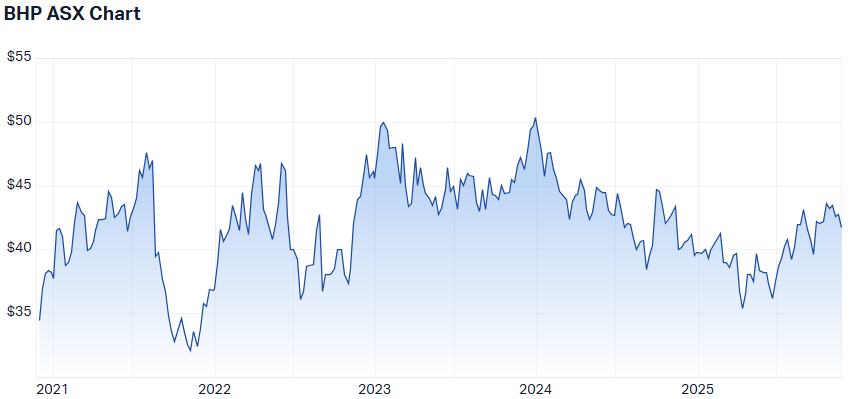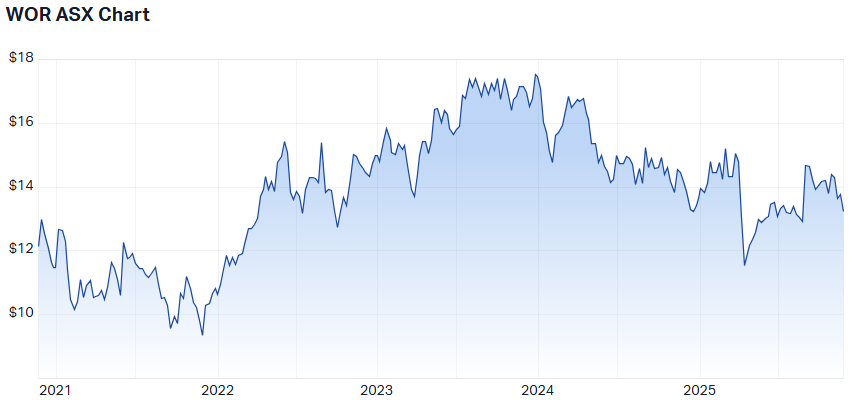The copper decade: Why demand is exploding and the 2 stocks set to benefit
For most of the past decade, the materials sector has been treated as a cyclical trade: buy the dips, sell the rallies, and wait for the next upswing. But the forces reshaping global metals demand today look very different from the ones that defined the last cycle.
Electrification is accelerating, renewable energy is scaling faster than expected, and AI - once a software story - is emerging as a major driver of real-world energy consumption. These shifts are not theoretical. They are now embedded in market behaviour.
But as market signals converge, from pricing to project pipelines to policy, one theme has grown louder and more consistent: the structural forces reshaping global demand for metals are no longer abstract forecasts. They are now investment realities, arriving faster than expected.
Copper sits at the centre of this transformation. It’s the metal that connects every major decarbonisation and electrification roadmap: power grids, EVs, data centres, renewable build-outs, and industrial electrification.
And unlike previous cycles, where supply eventually caught up, the gap between demand and new project delivery is widening; shaped by declining ore grades, permitting delays, geopolitical risk, cost inflation and the scarcity of new large-scale discoveries.
In my conversation with Michael Slack, Director of Research at ClearBridge Investments, it was clear that he sees copper not just as a beneficiary of long-term trends, but as one of the defining bottlenecks of the 2030s.
“Over the past 10 years, copper demand has grown at around 2.5% p.a., on average. This is set to accelerate by around 1% p.a. over the next decade as demand for electrification and displacement of fossil fuels takes place.”
For Slack, the decade ahead is shaped by two realities: accelerating demand and increasingly constrained supply. And within that tension lies one of the most important investment setups in the global materials sector.
Here’s what Slack sees coming next.

Copper demand accelerates beyond historical trends
Slack begins by emphasising that copper demand is no longer following its long-run 2.5% annual growth rate. The combination of electrification, renewable deployment and AI-driven energy consumption is pushing that baseline higher.
“This is set to accelerate by around 1% p.a. over the next decade as demand for electrification and displacement of fossil fuels takes place.”
He argues that the supply side is weakening at the exact moment demand is strengthening. Falling grades, deeper deposits and more remote resources mean new supply is slower and more capital-intensive.
Slack estimates that these combined forces could result in a market deficit of “around 6Mt per year by 2030,” a gap large enough to influence long-term pricing power.
To incentivise new supply, he believes copper will need to remain elevated: “US$4.50–5.00/lb,” a range the market is already trading within, accelerating feasibility studies and regulatory approvals.
Who benefits most: diversified miners and technical leaders
Slack argues that while pure-play copper producers will benefit, the true winners will be companies combining orebody access, balance sheet strength and deep technical capability.
“The best-positioned companies are those with access to the orebodies and those with the strongest balance sheets… but also those with deep technical capability and experience in developing new projects.”
Diversified miners with existing copper divisions remain advantaged: global relationships, established operating footprints and the capital to acquire or develop new assets. Mining services firms, particularly those working in remote jurisdictions, also stand to gain.
Incumbent copper producers will still benefit through incremental expansions, but Slack notes their success ultimately depends on exploration, a challenging and increasingly low-probability endeavour.
Tight supply and permitting delays reinforce Tier 1 asset value
Slack highlights that ESG constraints, permitting delays and geopolitical uncertainty simultaneously limit new supply and increase the strategic value of high-quality existing assets.
“These constraints are both a headwind and reinforce the value of Tier 1 incumbent copper assets.”
Tier 1 operations can expand more quickly, are already permitted and financed, and can capture wider margins during periods of high pricing.
While governments are trying to speed up critical mineral development, Slack suggests that red-tape reductions alone may not prevent future shortfalls.
Capital discipline has improved, but the cycle remains the cycle
Historically, mining companies have overspent during periods of high prices, worsening boom-bust cycles. Slack believes some discipline has returned, particularly among major miners like BHP and Rio Tinto.
“The big end of town... has definitely got the message about capital discipline and have relatively modest capital programs relative to the size of these companies.”
Still, he cautions that optimism during tight markets can reignite development spending. The bigger barrier, though, may now be the lack of viable new projects.
Exploration success rates have fallen, and even when spending lifts, results take years to materialise.
The decade-long winners: BHP (ASX: BHP) and Worley (ASX: WOR)
Slack identifies BHP (ASX: BHP) and Worley (ASX: WOR) as the two companies best positioned to outperform over the decade ahead.
“The 2 companies that I think will benefit most over the next decade is BHP Group and Worley.”
BHP (ASX: BHP)
For BHP, the appeal is its scale, balance sheet strength and unusually deep copper growth pipeline across both Latin America and Australia. Slack emphasises that “BHP Group take a long-term view to investment and, over the next decade, have a strong copper growth pipeline to execute on.”
He highlights that in Latin America, “a combination of replacement and growth projects could see copper production double,” with reinvestment at Escondida expected to “arrest” near-term grade declines and lift production by the early 2030s.
The undeveloped Vicuña project, meanwhile, is “a world scale orebody… likely to be in production by 2035” that could “add 50% to BHP’s Latin American copper production.”
In Australia, BHP’s optionality is just as material. Slack notes the company “could double copper production in South Australia as it expands Olympic Dam and its smelter and develops regional copper discoveries at Oak Dam and Carrapateena.”
When combined with steady potash growth and its established iron ore and metallurgical coal businesses, he sees BHP as one of the clearest long-term beneficiaries of the copper cycle.

Worley (ASX: WOR)
Worley, meanwhile, stands out as a leveraged play on the energy transition and the engineering intensity required to deliver it.
Slack describes the company as “the leading global engineering services company” with “strong capability in electrification… and deep experience in developing complex resource projects.”
What underpins his conviction is the scale of global investment required: “IEA estimates capex on Electricity Networks, Carbon Management and Clean Energy to increase 2–3x to US$4–5 trillion… with most of that growth by 2035.”
Worley, he concludes, is “well placed to participate in all these segments and grow and add value for, at least, the next decade.”

4 topics
2 stocks mentioned
1 contributor mentioned

